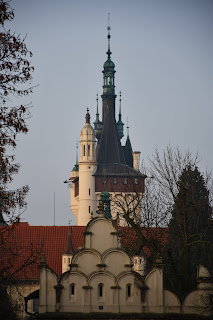Flying Tigers, Hidden Treasures
One of my
class’s topics for this week were the so-called Flying Tigers, the first
American Volunteer Group of the Chinese Air Force. The group, led by stubborn
and charismatic Claire Lee Chennault, was recruited with the tacit support of
President Roosevelt at a time when the USA had still not entered the Second
World War. Its objective was to prevent a Japanese takeover of China. With much
of China’s north already invaded, the east coast blockaded, and Indochina
controlled by the Japanese, defending the heartlands was an uphill battle.
American and Chinese pilots faced the vastly more numerous and better armed
Japanese air force. When British Burma fell to the Japanese, the only tenable
connection to the Allied world was an air route above the mountains of North
Burma leading to India’s far east. And yet, the Flying Tigers and Chinese
pilots trained at Chennault’s flight school were able to inflict massive
casualties on the Japanese air force, staving off invasion.
At that
time, provincial Kunming became the centre of a highly accomplished diaspora. Professors
and students at some of China’s most prestigious universities sought refuge and
continued their studies in the Chinese hinterlands, constantly under the threat
of bombardment.
On
Wednesday, my class made an excursion to the Kunming City Museum, which has a
permanent exhibition on the Flying Tigers. My favourite object at the museum
was a hidden treasure: a newspaper from 1944. On its front page, Roundup blasted
“ALLIES SWEEPING THROUGH FRANCE” as well as the equally momentous title: “LIKES
SPINACH” above a picture of a 40s celebrity. Some of our priorities have clearly
not changed.
Our class at Kunming Museum
An ancient stele unearthed at Dali stands at the centre of the museum.
The Flying Tigers exposition
The emblem of the Flying Tigers designed by the Walt Disney Company
Useful guides
Breaking news









Comments
Post a Comment